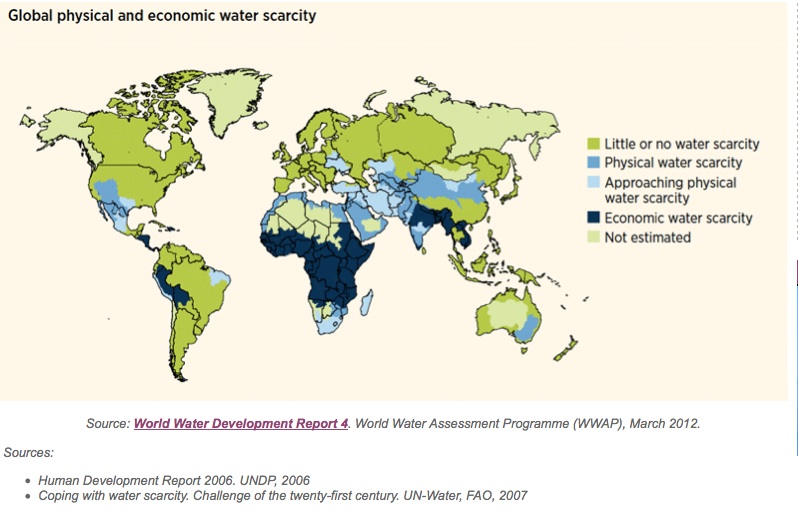California’s Drought to Heighten Awareness for Water-Tech Solutions
While California Gov. Jerry Brown’s drought declaration for the parched state may not bring immediate rain, water technology companies may discover their audiences, from customers, and investors to national media more primed to support their efforts. For years we have known that the 21st Century may experience serious water shortages, even “water wars.” And for years, water technology companies have worked hard to empress upon the public at large that effective solutions are available today.
Brown’s emergency declaration brings the drought crisis into the national forefront and makes the topic of water scarcity and water-tech innovation more timely for reporters tasked with contributing to the current, national conversation. Water technology companies who take advantage of this timing and reach out to reporters now (especially in California). Those who do may find the exposure of their brand and product successes quickly increased.
To help start your brainstorm, here are some quick and general ideas on how water-tech companies can gain attention:
- Promote how using a water technology can help consumers and organizations meet the 20% voluntary reduction
- Notify current users about how they are meeting this 20% reduction with the technology already
- Demonstrate to potential customers how much water it actually takes to meet the 20%
- Share case studies of current customer successes and extrapolate the water savings if the technology were adopted on a broader level
‘Exposure Scarcity’
Unfortunately, in today’s busy, noisy world if a product or service does not ease an immediate pain point, it often struggles to rise above the noise. Solutions must address problems that directly and emotionally effect the decision maker in order to gain traction. For the past decade, water technologies have experienced this first hand, making gains in some regions, while still struggling to secure the attention of investors to help them scale to making a serious impact. As Greentech Media mused in 2010, “VCs are indeed investing in water across a variety of water sectors. And there has been a robust M&A scene for water companies — it just doesn’t get a lot of press.” For the water-tech industry, the struggle has been “exposure scarcity.”
When top news media and financial centers are located in regions of the world experiencing little water scarcity, impressing upon media professionals the importance of water-tech innovation can fall on deaf ears. However, as those regions become impacted by the crisis, attitudes will change.
We saw this with the issue of climate change in the fall of 2012. When Hurricane Sandy barreled through the Northeast, suddenly the lives of reporters, producers, and executives were directly effected. Their homes and neighborhoods were flooded or destroyed, they lived without electricity for weeks, and many started taking a second look at the connection between super storms and climate change. Those of us in the business of promoting cleantech and sustainability found media outlets more interested in the solutions we had to share after Sandy. As the US drought begins to effect the agriculture center of the the US, the need for water innovation becomes harder to postpone and ignore. When reporters in New York find their local market is out of lemons because of the CA drought, the crisis hits home and writers take the metaphorical pen to paper.
Where water companies have thrived is locations across the globe already feeling the pinch of water shortages and wealthy enough to make capital improvements. The Israeli company TaKaDu is a prime example. Recently backed by 3M for an undisclosed sum, the leak monitoring company has grown steadily from start-up to international acclaim. Today, water utilities worldwide, from Australia to Chile utilize TaKaDu for monitoring their network, increasing efficiency and reducing water losses.
 TaKaDu brings visibility of potential leaks to utilities before problems turn into massive water losses. Similarly, the California Drought Emergency Declaration is bringing awareness to the American public at large of the persistent drought that has plagued the West and Southeast for years. It brings the crisis into greater focus, and increases the pressure on all parties involved to make strides to remedy acute problems and implement long term solutions that manage our water resources more effectively. More tactically, greater national exposure for the drought gives reporters timely news hooks to feature proven water-tech solutions.
TaKaDu brings visibility of potential leaks to utilities before problems turn into massive water losses. Similarly, the California Drought Emergency Declaration is bringing awareness to the American public at large of the persistent drought that has plagued the West and Southeast for years. It brings the crisis into greater focus, and increases the pressure on all parties involved to make strides to remedy acute problems and implement long term solutions that manage our water resources more effectively. More tactically, greater national exposure for the drought gives reporters timely news hooks to feature proven water-tech solutions.
As water runs out, the value of water only increases, putting more pressure on utilities and customers to find solutions. It’s up to water technology companies to take advantage of the current visibility around the California Drought and show the value dramatic improvements in water use technology can offer.
A technology revolution in water use as sweeping as transitioning from land line to smart phone, is on the horizon. Studies show that the global market value of smart water technologies is expected to quadruple in the coming decade, from $5.8 billion in 2010 to $22.2 billion in 2020. However, water-tech companies must take the initiative and capitalize on national conversations around water scarcity today. Only they can raise their own visibility and catch the eye of new investors and customers. Those who recognize this opportunity can float on this wave of water scarcity awareness and position themselves increased long term success.






